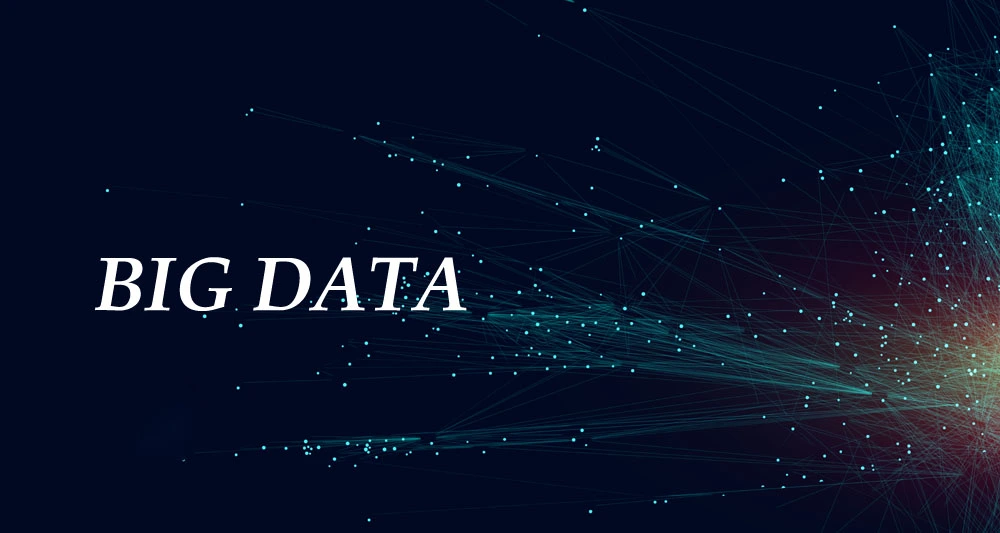As technology continues to advance, the volume of data that organizations collect and store continues to increase at an exponential rate. Big data analytics is the process of analyzing this massive amount of data to extract valuable insights and make informed decisions. In this article, we will explore the importance and applications of big data analytics.
What is Big Data Analytics
Big data analytics is the process of collecting, organizing, and analyzing large and complex datasets to uncover hidden patterns, correlations, and other valuable insights. The process involves using advanced analytical tools, algorithms, and machine learning techniques to analyze data and extract insights that would be impossible to find using traditional data analysis methods.
Types of big data
Big data can be broadly classified into three types: structured, unstructured, and semi-structured.
Structured data
Structured data is highly organized and easily searchable as it is stored in a fixed format. This data is typically stored in databases and can be analyzed using traditional data analysis tools. Examples of structured data include transactional data, financial records, and customer profiles.
Unstructured data
Unstructured data, on the other hand, is not organized in a predefined manner and is not easily searchable. This data is typically stored in various file formats such as text, images, videos, and social media posts. Examples of unstructured data include social media feeds, emails, and customer reviews.
Semi-structured data
Semi-structured data is a mix of both structured and unstructured data. It has some structure but does not fit into a traditional relational database. Semi-structured data includes data in XML, JSON, or CSV formats. Examples of semi-structured data include web logs, sensor data, and mobile app data.
Understanding the type of data is important in determining the appropriate big data analytics techniques to use. Different techniques are used for different types of data, and a combination of techniques may be required for semi-structured data.
Sources of big data
Big data can come from various sources, including:
- Social media: Social media platforms generate vast amounts of data every day, including posts, comments, likes, and shares. This data can provide insights into customer behavior, sentiment, and preferences.
- Sensors: With the rise of the Internet of Things (IoT), sensors are increasingly being used to collect data from various sources, such as temperature, humidity, location, and movement. This data can be used for predictive maintenance, resource optimization, and environmental monitoring.
- Web data: Web data refers to information collected from web pages, including text, images, and videos. This data can be used to understand customer behavior, track online trends, and analyze website traffic.
- Transactions: Transactions data includes records of all the transactions that occur within an organization, including sales, purchases, and inventory movements. This data can be used for fraud detection, risk management, and forecasting.
- Machine-generated data: Machine-generated data refers to data that is generated by machines, including logs, system events, and application data. This data can be used for system monitoring, error detection, and troubleshooting.
- Public data: Public data includes data that is freely available from various sources, such as government websites, public records, and research institutions. This data can be used for market research, trend analysis, and demographic profiling.
Challenges of handling big data
Handling big data presents several challenges, including storage, processing, and analysis.
Storage
Big data requires massive storage capacity, which can be expensive and difficult to manage. Organizations need to invest in appropriate storage infrastructure, such as data centers or cloud storage solutions, to ensure data is securely stored and easily accessible.
Processing
Big data requires powerful processing capabilities to handle the large volume, variety, and velocity of data. Organizations need to use advanced technologies, such as distributed computing and parallel processing, to process data efficiently.
Analysis
Big data requires advanced analytical techniques to extract valuable insights. Traditional data analysis tools and techniques may not be suitable for big data analysis. Organizations need to use advanced analytics tools, such as data mining, machine learning, and natural language processing, to uncover patterns and insights in big data.
Quality
Big data can suffer from quality issues, such as missing or incorrect data. Ensuring data quality is essential for accurate analysis and decision-making.
Security
Big data contains sensitive and confidential information, making it a target for cyber attacks. Ensuring data security is essential to protect against unauthorized access, theft, and breaches.
Applications of Big Data Analytics
Big data analytics has a wide range of applications across different industries. Here are some of the most common applications:
Healthcare
Big data analytics is being used in the healthcare industry to improve patient outcomes and reduce costs. By analyzing patient data, healthcare providers can identify risk factors, develop personalized treatment plans, and improve disease management.
Finance
Big data analytics is being used in the finance industry to identify fraud, manage risk, and improve investment decisions. By analyzing financial data, organizations can identify patterns that indicate fraudulent activity, develop risk management strategies, and make informed investment decisions.
Retail
Big data analytics is being used in the retail industry to improve customer experience and increase sales. By analyzing customer data, retailers can personalize marketing messages, optimize product placement, and improve inventory management.
Manufacturing
Big data analytics is being used in the manufacturing industry to improve efficiency and reduce costs. By analyzing production data, manufacturers can identify areas where they can improve their processes, reduce waste, and increase productivity.
How does big data analytics work
Big data analytics involves using advanced software tools and techniques to analyze large and complex datasets. The process begins with collecting and storing data from various sources such as social media, sensors, transactions, and other sources. Once the data is collected, it is organized and pre-processed to prepare it for analysis.
Next, the data is analyzed using advanced analytical tools, algorithms, and machine learning techniques. This involves identifying patterns, correlations, and other insights that are hidden within the data. The insights gained from big data analytics can be used to make informed decisions, identify new opportunities, and solve complex problems.
Big data analytics requires a combination of technical expertise, domain knowledge, and business acumen. It also requires access to high-performance computing resources, such as clusters of servers, to handle the volume and complexity of the data. With the right tools and expertise, big data analytics can provide valuable insights that can help organizations stay ahead of the competition and achieve their goals.
Benefits of using big data analytics
There are many benefits of using big data analytics in various fields, including:
- Improved Decision-Making: Big data analytics can help organizations make more informed decisions by providing valuable insights and identifying patterns and trends that may have been missed otherwise.
- Enhanced Efficiency: With big data analytics, organizations can streamline their processes and improve efficiency by automating repetitive tasks and optimizing workflows.
- Better Customer Understanding: By analyzing large datasets of customer data, organizations can gain a deeper understanding of their customers’ behavior, preferences, and needs. This can help them tailor their products and services to better meet customer demands.
- Enhanced Product Development: Big data analytics can help organizations identify areas for improvement in their products and services, as well as uncover new opportunities for innovation.
- Improved Risk Management: By analyzing large datasets of historical data, organizations can identify potential risks and develop strategies to mitigate them. This can help them reduce their exposure to risk and improve overall business resilience.
- Increased Revenue: By leveraging the insights gained from big data analytics, organizations can identify new opportunities to increase revenue and improve their bottom line.
- Competitive Advantage: By using big data analytics, organizations can gain a competitive advantage by staying ahead of the curve and identifying emerging trends and opportunities before their competitors.
Big Data Analytics Tools
Big data analytics tools are software applications that enable organizations to process, analyze, and visualize large and complex datasets. Here are some popular big data analytics tools:
Overview of popular big data analytics tools
1. Hadoop
Hadoop is an open-source framework that enables distributed processing of large datasets across clusters of computers. It uses a distributed file system called Hadoop Distributed File System (HDFS) to store and manage data, and MapReduce algorithm to process data.
2. Apache Spark
Apache Spark is an open-source analytics engine that provides in-memory processing for large datasets. It supports various programming languages such as Java, Python, and Scala, and provides a unified analytics platform for batch processing, real-time streaming, and machine learning.
3. Apache Hive
Apache Hive is a data warehousing tool that enables data analysis and querying of large datasets stored in Hadoop. It uses SQL-like language called HiveQL to query data and supports various data formats such as CSV, JSON, and Parquet.
4. Tableau
Tableau is a data visualization tool that enables users to create interactive and visually appealing dashboards and reports from large and complex datasets. It supports various data sources and provides drag-and-drop functionality to create visualizations.
5. SAS
SAS is a software suite that provides advanced analytics and data management capabilities for big data. It supports various data sources and provides a wide range of statistical analysis tools, machine learning algorithms, and predictive modeling techniques.
6. IBM Watson Analytics
IBM Watson Analytics is a cloud-based analytics platform that provides natural language querying, data visualization, and predictive analytics capabilities. It supports various data sources and provides drag-and-drop functionality to create visualizations.
What are the future trends in big data analytics
Big data analytics has been rapidly evolving over the past few years, and there are several emerging trends that are shaping the future of big data analytics:
Cloud-based analytics
Cloud-based analytics platforms are becoming increasingly popular, as they provide flexible and scalable infrastructure for processing and analyzing large datasets. Cloud-based analytics also enable real-time data processing and analytics, and eliminate the need for organizations to maintain and upgrade their own infrastructure.
AI and machine learning
AI and machine learning are increasingly being used to enhance big data analytics capabilities. AI algorithms can analyze large datasets and extract meaningful insights, while machine learning algorithms can learn from data and improve their accuracy over time.
Edge computing
Edge computing involves processing and analyzing data at or near the source, rather than transmitting all data to a central location for processing. Edge computing can reduce latency and bandwidth requirements, and enable real-time data processing and analytics.
Data governance and privacy
As organizations collect and analyze increasingly large amounts of data, data governance and privacy are becoming increasingly important. Organizations need to implement robust data governance and privacy policies to ensure compliance with regulations and protect sensitive data.
Natural language processing
Natural language processing (NLP) is a field of AI that enables machines to understand and interpret human language. NLP can be used to analyze unstructured data such as social media posts and customer feedback, and extract valuable insights.
DataOps
DataOps is an emerging approach to data analytics that emphasizes collaboration, automation, and agility. DataOps combines elements of DevOps and Agile methodologies to enable faster and more efficient data analytics.
The Importance of Big Data Analytics
Big data analytics has become an essential tool for organizations across all industries. Here are some of the reasons why:
A[Data Sources] –Data Collection–> B(Data Storage)
B –Data Processing–> C(Data Analytics)
C –Data Visualization–> D(Insights)
Better Decision-Making
By analyzing large amounts of data, organizations can make more informed decisions. Big data analytics can help organizations identify market trends, customer behavior patterns, and other factors that can impact their business. With this information, organizations can make data-driven decisions that are more likely to lead to success.
Improved Efficiency
Big data analytics can help organizations improve their efficiency by identifying areas of their operations that can be streamlined or automated. By analyzing data on factors such as employee productivity and resource utilization, organizations can identify areas where they can improve their processes and reduce waste.
Enhanced Customer Experience
By analyzing customer data, organizations can gain insights into customer behavior patterns, preferences, and pain points. This information can be used to personalize marketing messages, improve product design, and enhance the overall customer experience.
























+ There are no comments
Add yours